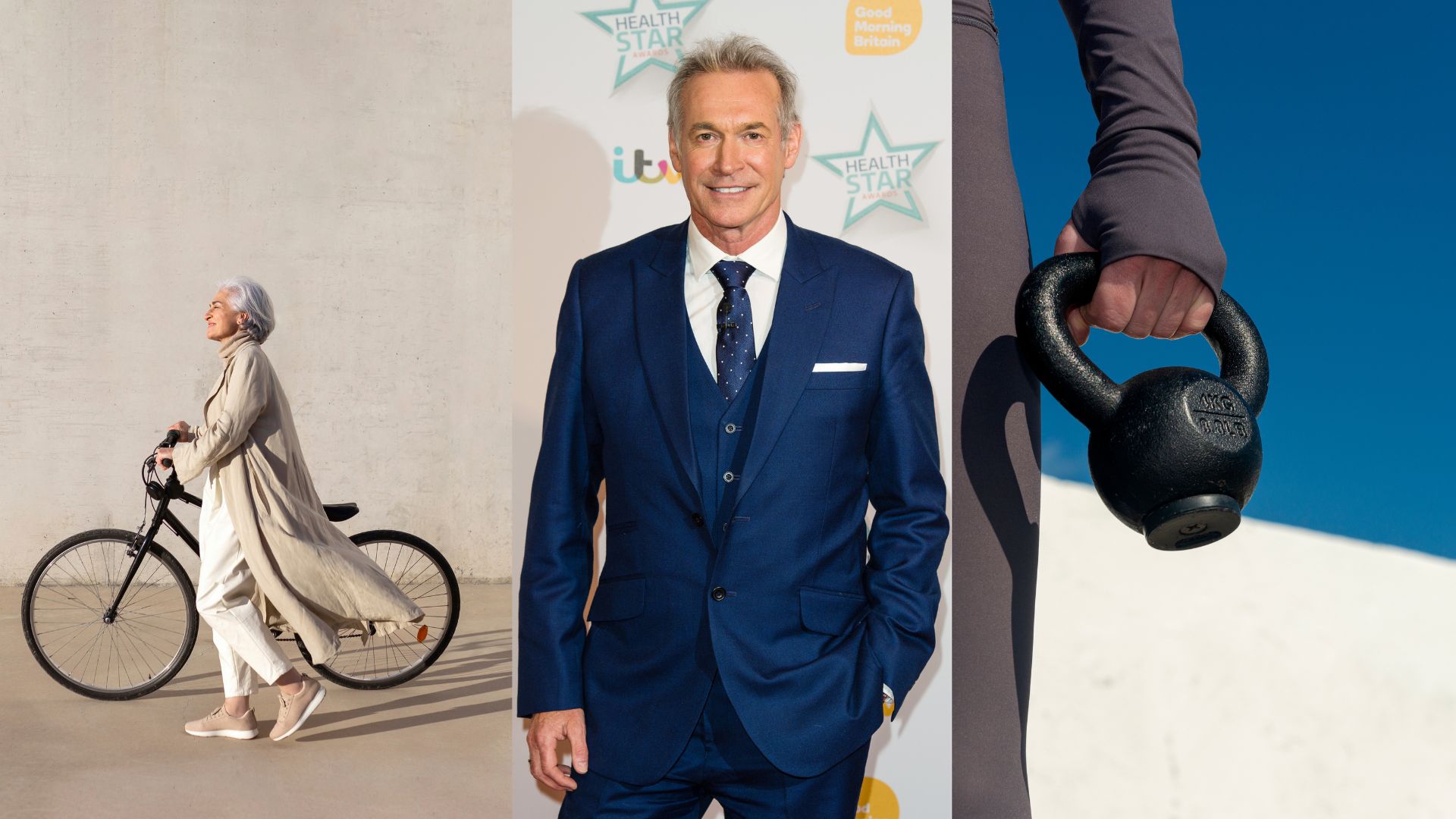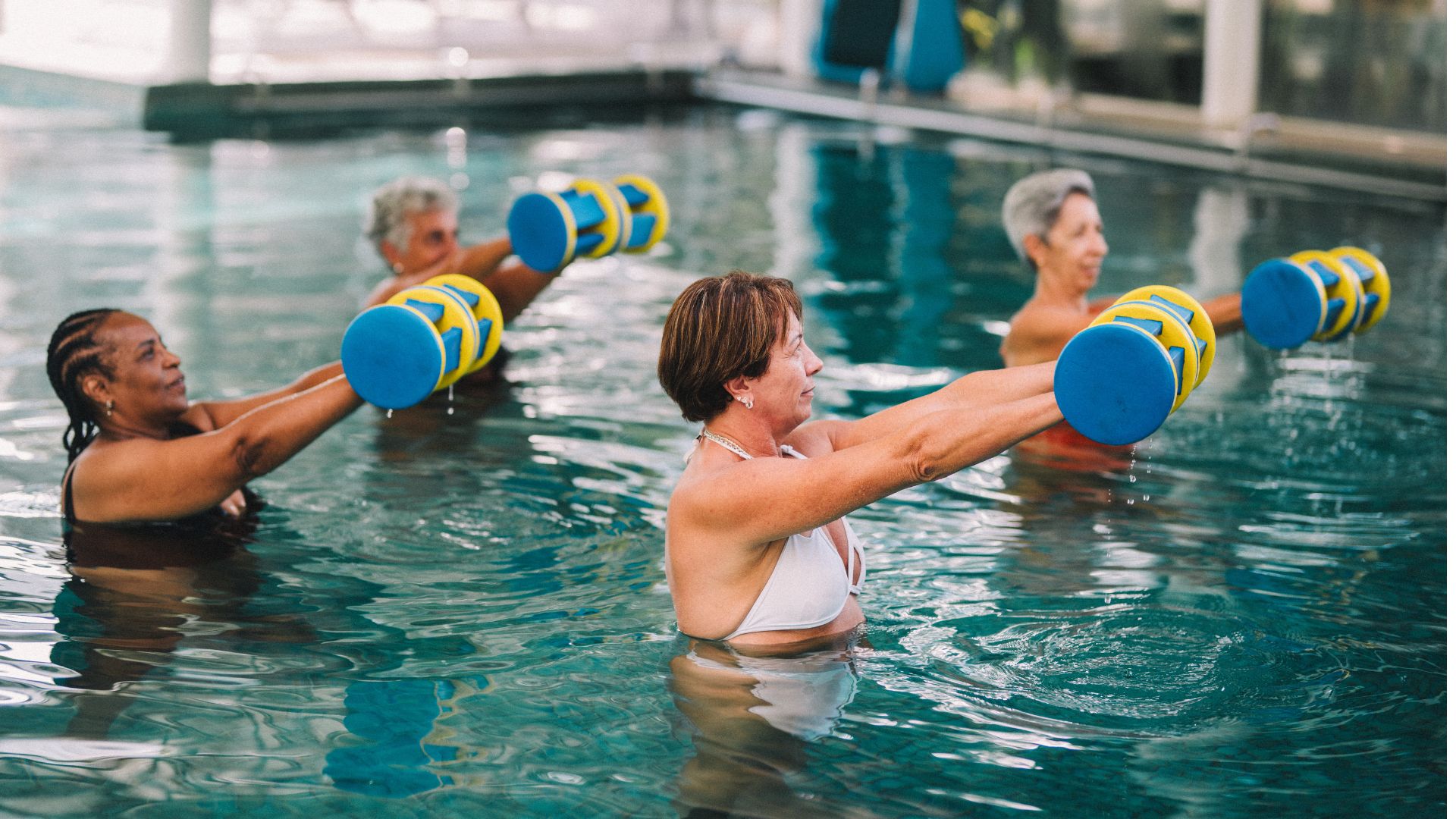Dr Hilary Jones reveals the two 'ideal' exercises for losing weight and keeping it off for good
The doctor appeared on Lorraine to share his tips on how to burn more calories in the gym, outdoors or at home


While not everyone has a weight loss goal, if you do, you'll want to know how to lose weight healthily and keep it off for good. It's a combination of a balanced diet, good sleep, and a consistent workout habit - but some exercises for weight loss may be more useful than others.
What do Pilates for beginners, walking yoga, and a resistance band leg workout all have in common? According to GP Dr Hilary Jones, these are just some of the two "ideal" types of exercise that can help you lose weight and keep it off long term.
With the rise in popularity of weight loss jabs in the UK, Dr Hilary Jones and Dr Amir Khan sat down with host Christine Lampard on ITV's Lorraine to discuss ways to lose weight naturally. Dr Jones offered two "really good" exercises that when done together, could be hugely beneficial for healthy and long-term weight loss.
"Exercise is important as we all know. Some people have a genetic predisposition to increased appetite and being overweight. You can't change your genetics but you can change the amount of exercise you take and the calories you put in," he said.
One of the recommended exercises was LISS. This stands for low-intensity steady state training and "it's nothing new", Dr Jones said, but can be a very productive way to get moving and burn calories.
"It's exercise at mild to moderate intensity for say, half an hour to an hour," he said. "This would include walking, brisk walking, aquarobics, swimming, yoga, these types of things. You don't need to go at it like a bull in a china shop, in the gym doing high-intensity stuff all the time. This is a good way to burn calories most efficiently. You're using more oxygen and that oxygen is burning fat."
NHS guidelines for exercise have recommended 150 minutes of moderate-intensity exercise for years, to be done spread out through the week, to lower the risk of serious disease like diabetes, cancer, and heart disease in women. But Dr Jones says that these and "longevity itself" are connected to our weight, "and we know that two thirds of the adult population are overweight or obese".
Sign up for the woman&home newsletter
Sign up to our free daily email for the latest royal and entertainment news, interesting opinion, expert advice on styling and beauty trends, and no-nonsense guides to the health and wellness questions you want answered.
The second of the exercises for weight loss recommended by Dr Jones was strength training for women. "Resistance training does different things. You're using muscle rather than cardio all the time, you're using protein, but you're also reducing your metabolism even at rest," he said.
"With cardio, you burn calories while you're exercising but with strength training, you increase your metabolism, so even after the exercise and in between exercises, you're burning calories. This is good for long-term fat loss," he said.
Doing both LISS exercise and strength training, which you can do in the gym or at home with weights like dumbbells and kettlebells or your own body weight, is "the ideal thing".
But how often do you have to exercise to see this benefit? "Three to five sessions a week of the strength training and two to three of the aerobic cardio exercise," says Dr Jones. "That's about the best combination if you want the steady weight loss."
Types of LISS exercise
- Brisk walking
- Aquarobics
- Swimming
- Yoga
- Pilates
- Cycling
- Elliptical
- Climbing the stairs
- Rowing
Any type of exercise can be considered low-intensity steady state training, provided you stay in the "mild to moderate" range. According to the NHS, this is exercise that "increases your heart rate and breathing, but still allows you to talk."

Aquarobics and swimming are good exercises for weight loss, says Dr Hilary Jones.
Other benefits of LISS exercise
The benefits of LISS exercise and strength training for weight loss as exercises for weight loss are clear - but what about the other benefits of this slow and steady type of cardio? Emily Servante, a certified personal trainer at Ultimate Performance, told woman&home: "For busy people with a lot of stress, taking the time out of your day to go for a walk can be better than high-intensity exercise for bringing down cortisol levels and clearing your head."
While you can do your 10,000 steps at home with an indoor walking workout, most experts advise you take your LISS workout outdoors. "If you opt for a walk or a bike ride, you’ll get some fresh air and hopefully some exposure to sunlight. And we know that circadian rhythms – which is basically the way our body regulates our sleep-wake cycle – are dependent on sunlight," says Servante. "So, more sunlight leads to better regulated sleep."
Not only that, but the two exercises go hand in hand. Your LISS exercise can help you out when it comes to strength training. "It might enhance your recovery between strength training sessions," says Servante. "If you’ve got sore legs from squats, going for a power walk the next day will help with blood flow and nutrient delivery to the damaged muscles."
This type of exercise also has social benefits - you can go for a bike ride, a spot of walking yoga, or a gentle run with a friend and not feel out of breath, making it the perfect way to catch up while getting your heart rate up.
Why LISS works for everyone
LISS exercise is a good addition to anyone's exercise routine, regardless of fitness level, says Lily Chapman, a performance coach and nutritionist for P3rform. She previously told woman&home: "You can use LISS exercise to improve your physical and mental wellbeing, whether you've never set foot into a gym before or you've been working out for years as its intensity and duration can be altered depending on where your level is at."
Just be careful of doing too much of any type of exercise. As Dr Jones says, it's not about doing exercise beyond your personal capabilities. If you're new to exercise, start small as "high impact may induce injury," says Chapman.

Grace Walsh is woman&home's Health Channel Editor, working across the areas of fitness, nutrition, sleep, mental health, relationships, and sex. She is also a qualified fitness instructor. In 2025, she will be taking on her third marathon in Brighton, completing her first ultra marathon, and qualifying as a certified personal trainer and nutrition coach.
A digital journalist with over seven years experience as a writer and editor for UK publications, Grace has covered (almost) everything in the world of health and wellbeing with bylines in Cosmopolitan, Red, The i Paper, GoodtoKnow, and more.
-
 Need spring style inspiration? Jennifer Aniston proves a shirt dress is the most versatile item you can invest in
Need spring style inspiration? Jennifer Aniston proves a shirt dress is the most versatile item you can invest inIf you only buy one piece this weekend, make it a shirt dress
By Matilda Stanley Published
-
 Celebrities you never knew got their start as models, from Angelina Jolie's 'terrible' experience to A-listers who started as pageant queens
Celebrities you never knew got their start as models, from Angelina Jolie's 'terrible' experience to A-listers who started as pageant queensWhether it was just for a short time or it's how they got discovered for something else, these stars owe it all to striking a pose
By Jack Slater Published